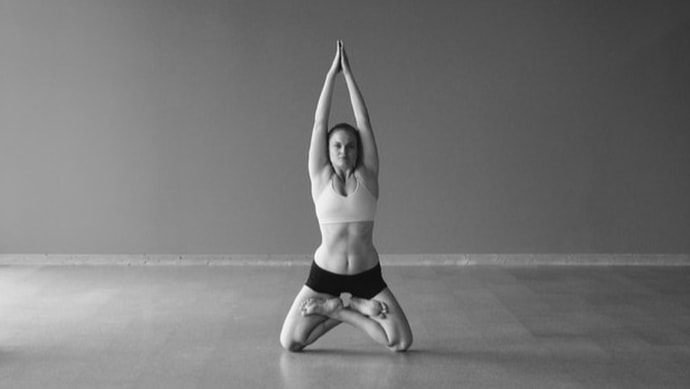|
Each of us is capable of remarkable progress in yoga. But that progress requires commitment and the recognition that there is more than one element to a well-rounded practice. There are four parts of a yoga practice, and when they are all incorporated, our progress is swift.
1. STUDIO PRACTICE This is the most common element of yoga practice, especially in the modern West. We go to our local yoga studio to do class, led by a teacher. These classes have the benefit of being scheduled, so we carve out time from our day to attend. Regular attendance leads to familiarity and hopefully expertise. The main drawback of studio classes is that they are geared toward the group and not the individual. The practices are generally "good for everybody," which often means they are not optimized for the progress of each unique student. There is great benefit to be wrung from Studio Practice, but it is important to complement it with Home Practice. 2. HOME PRACTICE The benefits and drawbacks of Home Practice are exactly opposite of Studio Practice. The main benefit is that it fits our skill level and trajectory perfectly. We can include practices that are challenging enough to enable progress; we can take time and repetition to build new skills. A Home Practice is vital for the progressing yogi. It will always be changing, because we are always changing. The main challenge of Home Practice is that it requires tremendous internal motivation from us, as opposed to a Studio Practice in which the teacher assumes responsibility for the student in motivation, choice and length of practices. At home, we have to carve out our own time; we have to ignore the dinging phone; we have to stay focused and alert all by ourselves. Great aids to this end are videos, books and pre-determining what our practice for the day will entail. 3. STUDY This, along with Home Practice, is where exceptional yogis are made. We go beyond the ordinary physical- and fitness-based approach and begin to explore its larger and deeper meaning. Study includes a vast array of subjects---and we can start with what interests us---from anatomy and psychology to history, philosophy and spirituality. The good news is that we really can study what compels us, as it will lead us to greater knowledge, understanding and curiosity. The challenge is simply finding time, plagued as we are by busy schedules and abundant sources of distraction. 4. INTENSIVE STUDY/PRACTICE WITH MASTERS In all walks of life, our habits blind us and we can lose track of the forest for the trees. In order to see ourselves clearly and keep from developing detrimental patterns, it is important to step outside of our daily routines once in a while. In yoga, this means finding yogis who have committed their lives to its practice and teaching. They have generally gone far and deep into the practices, and we benefit greatly from being in their presence and receiving their instruction. Their expertise is compounded by their fresh perspective---since they don't watch us practice everyday---and they will often see our weaknesses and potential immediately. The main drawback of studying with masters is that it takes great commitment of time and usually money. We may have to travel to another city and dedicate an entire weekend, week or month to their program. In our experience, it is usually worthwhile, but it doesn't make the decision any easier!
0 Comments
Leave a Reply. |
AUTHORSScott & Ida are Yoga Acharyas (Masters of Yoga). They are scholars as well as practitioners of yogic postures, breath control and meditation. They are the head teachers of Ghosh Yoga.
POPULAR- The 113 Postures of Ghosh Yoga
- Make the Hamstrings Strong, Not Long - Understanding Chair Posture - Lock the Knee History - It Doesn't Matter If Your Head Is On Your Knee - Bow Pose (Dhanurasana) - 5 Reasons To Backbend - Origins of Standing Bow - The Traditional Yoga In Bikram's Class - What About the Women?! - Through Bishnu's Eyes - Why Teaching Is Not a Personal Practice Categories
All
Archives
May 2024
|







 RSS Feed
RSS Feed